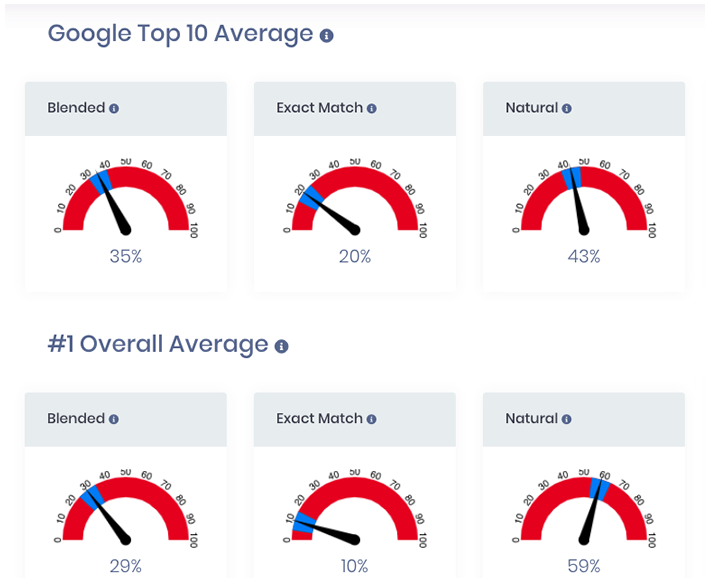Politics
7 Tips for Powerful Link Building
Published
2 years agoon
By
Drew Simpson
If you’re looking for a way to expand your brand presence, drive traffic to your website, increase sales, or just grow your business in general, link building promises all of that and more.
However, it’s an element of marketing that very few business owners are actually familiar with.
In this article, we’ll explain what link building is and how it can be leveraged within your own strategy.
What is Link Building?
Link building is basically the process of getting other websites to point links back to individual pages on your website.
This is typically done by hyperlinking text within articles and blog posts and directing people to your own content.
“Google’s algorithms are complex and always evolving, but backlinks remain an important factor in how every search engine determines which sites rank for which keywords,” WordStream mentions. “Building links is one of the many tactics used in search engine optimization (SEO) because links are a signal to Google that your site is a quality resource worthy of citation. Therefore, sites with more backlinks tend to earn higher rankings.”
The benefits of link building reach far and wide.
First and foremost, it increases your organic searchability. This also has the added effect of enhancing your authority and credibility.
As a result, you can expect increased traffic to your website, resulting in more customers, sales, etc.
7 Link Building Tips & Strategies
Link building is not a perfect science. It’s constantly evolving as search engines make tweaks to their algorithms.
However, if you commit to the process and respect the fundamental principles, success is likely. Keeping this in mind, here are a few tips:
Create Quality Content
Don’t jump into link building too prematurely.
While links are shiny and attractive, they won’t do much good if you don’t have quality content. This is why it’s always a good idea to begin with some onsite content creation.
You don’t need to publish a dozen blog posts a week or have thousands of pages on your website. You do, however, need a handful of high-quality onsite resources that you can link to with confidence.
While this article isn’t focused on onsite content strategies, we would recommend looking into a pillar strategy.
A good content pillar strategy combined with a strong link building strategy will yield fruitful results in any industry or niche.
Know Your Audience
Anyone can go out and acquire a bunch of links fairly easily.
But if you’re interested in doing link building right, you also have to consider the publishers you’re choosing.
There needs to be a good alignment between the publisher, your website, and your audience.
If you run an HVAC company, for example, you’ll get the most benefit by building backlinks from home maintenance websites and DIY blogs.
You wouldn’t get nearly as much value from financial websites or political blogs.
Use Anchor Text With Care
Does it really look natural to include the exact anchor in every guest post, press release and off-site article you produce that links back to your services page(s)?
Google doesn’t think so.
When it comes to the anchor text you use, there should be diversity and variability.
In fact, here’s the right mix based on assessments of sites whose pages rank in the top 10.

Your homepage is also a different monster when it comes to how you should be looking to build links to it.
Use the Right Link Velocity
If your site or page receives 10 links one day and 10,000 backlinks the next, do you think that looks natural?
Link velocity is defined by the number of links over a specific time horizon.
It would be more natural for a site to get 10,000 links in a week if the previously week it had an influx of say 8,000 or 9,000.
Let your links build on each other over time.
Viral links come into play and can be considered “natural,” but such instances are more the exception than the rule.
If you are able to acquire 50 links in a single month in a natural way, focusing on outreach strategies, then next month shoot for 60 and so-on.
Eventually your link momentum will shift and you’ll start to see an impact on your rankings.
Remember, what is a good link velocity for one site, may be a horrible velocity for another.
Hire a Link Building Service
Trying to do 100 percent of your link building on your own can be exhausting.
And unless you have some experience with SEO and content strategy, it won’t go very well.
This is why we recommend hiring a link building partner to facilitate link building on your behalf.
When researching link building services, look for companies that have established relationships with publishers.
You don’t want to use a company that’s only been in business for a few months.
There’s a lot of turnover in this industry and most services don’t last.
Choose a company that’s been around for a minimum of 10 years and that practices white-hat link building.
Stick With It
Link building takes time. It’s not something you do once and then expect immediate results. It’s an ongoing investment that gives you ongoing results. At a minimum, you should be investing in two or three quality backlinks per month as part of your standard marketing strategy.
Don’t Just Focus on Link Building
If you have the same number of backlinks and authority as competing pages, but they are outranking you for the terms you want, then it might be time to take a look at other areas that may be impacting your site.
While link building has a strong correlation to ranking in Google and other search engines, it does not have the highest correlation.
Diversity among factors is the best signal to Google for improved rankings.
Take the time to diversify away from just building links for SEO.
Enjoy the Benefits of Link Building
Link building requires resources. You must be willing to fork over some time, effort, and (in many cases) funds. But this isn’t an expense – it’s an investment. And like any good investment, you can expect a positive return on investment. You don’t have to build out thousands of links at once.
Start small and go from there. Your progress will compound and you’ll eventually enjoy the full complement of benefits that link building has to offer.
Nate Nead
Nate Nead is the CEO & Managing Member of Nead, LLC, a consulting company that provides strategic advisory services across multiple disciplines including finance, marketing and software development. For over a decade Nate had provided strategic guidance on M&A, capital procurement, technology and marketing solutions for some of the most well-known online brands. He and his team advise Fortune 500 and SMB clients alike. The team is based in Seattle, Washington; El Paso, Texas and West Palm Beach, Florida.
You may like
-


This company is building AI for African languages
-


The Download: the origins of life, and building Facebook’s AI empire
-


Return to the Office: Trends and Tips to Make You a Success
-


3 Travel Tips for the Female Executive Traveling Solo
-


The Importance of Diversity and Inclusion in Building a Strong Tech Team
-


Building Responsive Layouts for iOS Apps: A Step-by-Step Guide
Politics
Fintech Kennek raises $12.5M seed round to digitize lending
Published
7 months agoon
10/11/2023By
Drew Simpson
London-based fintech startup Kennek has raised $12.5 million in seed funding to expand its lending operating system.
According to an Oct. 10 tech.eu report, the round was led by HV Capital and included participation from Dutch Founders Fund, AlbionVC, FFVC, Plug & Play Ventures, and Syndicate One. Kennek offers software-as-a-service tools to help non-bank lenders streamline their operations using open banking, open finance, and payments.
The platform aims to automate time-consuming manual tasks and consolidate fragmented data to simplify lending. Xavier De Pauw, founder of Kennek said:
“Until kennek, lenders had to devote countless hours to menial operational tasks and deal with jumbled and hard-coded data – which makes every other part of lending a headache. As former lenders ourselves, we lived and breathed these frustrations, and built kennek to make them a thing of the past.”
The company said the latest funding round was oversubscribed and closed quickly despite the challenging fundraising environment. The new capital will be used to expand Kennek’s engineering team and strengthen its market position in the UK while exploring expansion into other European markets. Barbod Namini, Partner at lead investor HV Capital, commented on the investment:
“Kennek has developed an ambitious and genuinely unique proposition which we think can be the foundation of the entire alternative lending space. […] It is a complicated market and a solution that brings together all information and stakeholders onto a single platform is highly compelling for both lenders & the ecosystem as a whole.”
The fintech lending space has grown rapidly in recent years, but many lenders still rely on legacy systems and manual processes that limit efficiency and scalability. Kennek aims to leverage open banking and data integration to provide lenders with a more streamlined, automated lending experience.
The seed funding will allow the London-based startup to continue developing its platform and expanding its team to meet demand from non-bank lenders looking to digitize operations. Kennek’s focus on the UK and Europe also comes amid rising adoption of open banking and open finance in the regions.
Featured Image Credit: Photo from Kennek.io; Thank you!
Radek Zielinski
Radek Zielinski is an experienced technology and financial journalist with a passion for cybersecurity and futurology.
Politics
Fortune 500’s race for generative AI breakthroughs
Published
7 months agoon
10/11/2023By
Drew Simpson
As excitement around generative AI grows, Fortune 500 companies, including Goldman Sachs, are carefully examining the possible applications of this technology. A recent survey of U.S. executives indicated that 60% believe generative AI will substantially impact their businesses in the long term. However, they anticipate a one to two-year timeframe before implementing their initial solutions. This optimism stems from the potential of generative AI to revolutionize various aspects of businesses, from enhancing customer experiences to optimizing internal processes. In the short term, companies will likely focus on pilot projects and experimentation, gradually integrating generative AI into their operations as they witness its positive influence on efficiency and profitability.
Goldman Sachs’ Cautious Approach to Implementing Generative AI
In a recent interview, Goldman Sachs CIO Marco Argenti revealed that the firm has not yet implemented any generative AI use cases. Instead, the company focuses on experimentation and setting high standards before adopting the technology. Argenti recognized the desire for outcomes in areas like developer and operational efficiency but emphasized ensuring precision before putting experimental AI use cases into production.
According to Argenti, striking the right balance between driving innovation and maintaining accuracy is crucial for successfully integrating generative AI within the firm. Goldman Sachs intends to continue exploring this emerging technology’s potential benefits and applications while diligently assessing risks to ensure it meets the company’s stringent quality standards.
One possible application for Goldman Sachs is in software development, where the company has observed a 20-40% productivity increase during its trials. The goal is for 1,000 developers to utilize generative AI tools by year’s end. However, Argenti emphasized that a well-defined expectation of return on investment is necessary before fully integrating generative AI into production.
To achieve this, the company plans to implement a systematic and strategic approach to adopting generative AI, ensuring that it complements and enhances the skills of its developers. Additionally, Goldman Sachs intends to evaluate the long-term impact of generative AI on their software development processes and the overall quality of the applications being developed.
Goldman Sachs’ approach to AI implementation goes beyond merely executing models. The firm has created a platform encompassing technical, legal, and compliance assessments to filter out improper content and keep track of all interactions. This comprehensive system ensures seamless integration of artificial intelligence in operations while adhering to regulatory standards and maintaining client confidentiality. Moreover, the platform continuously improves and adapts its algorithms, allowing Goldman Sachs to stay at the forefront of technology and offer its clients the most efficient and secure services.
Featured Image Credit: Photo by Google DeepMind; Pexels; Thank you!
Deanna Ritchie
Managing Editor at ReadWrite
Deanna is the Managing Editor at ReadWrite. Previously she worked as the Editor in Chief for Startup Grind and has over 20+ years of experience in content management and content development.
Politics
UK seizes web3 opportunity simplifying crypto regulations
Published
7 months agoon
10/10/2023By
Drew Simpson
As Web3 companies increasingly consider leaving the United States due to regulatory ambiguity, the United Kingdom must simplify its cryptocurrency regulations to attract these businesses. The conservative think tank Policy Exchange recently released a report detailing ten suggestions for improving Web3 regulation in the country. Among the recommendations are reducing liability for token holders in decentralized autonomous organizations (DAOs) and encouraging the Financial Conduct Authority (FCA) to adopt alternative Know Your Customer (KYC) methodologies, such as digital identities and blockchain analytics tools. These suggestions aim to position the UK as a hub for Web3 innovation and attract blockchain-based businesses looking for a more conducive regulatory environment.
Streamlining Cryptocurrency Regulations for Innovation
To make it easier for emerging Web3 companies to navigate existing legal frameworks and contribute to the UK’s digital economy growth, the government must streamline cryptocurrency regulations and adopt forward-looking approaches. By making the regulatory landscape clear and straightforward, the UK can create an environment that fosters innovation, growth, and competitiveness in the global fintech industry.
The Policy Exchange report also recommends not weakening self-hosted wallets or treating proof-of-stake (PoS) services as financial services. This approach aims to protect the fundamental principles of decentralization and user autonomy while strongly emphasizing security and regulatory compliance. By doing so, the UK can nurture an environment that encourages innovation and the continued growth of blockchain technology.
Despite recent strict measures by UK authorities, such as His Majesty’s Treasury and the FCA, toward the digital assets sector, the proposed changes in the Policy Exchange report strive to make the UK a more attractive location for Web3 enterprises. By adopting these suggestions, the UK can demonstrate its commitment to fostering innovation in the rapidly evolving blockchain and cryptocurrency industries while ensuring a robust and transparent regulatory environment.
The ongoing uncertainty surrounding cryptocurrency regulations in various countries has prompted Web3 companies to explore alternative jurisdictions with more precise legal frameworks. As the United States grapples with regulatory ambiguity, the United Kingdom can position itself as a hub for Web3 innovation by simplifying and streamlining its cryptocurrency regulations.
Featured Image Credit: Photo by Jonathan Borba; Pexels; Thank you!
Deanna Ritchie
Managing Editor at ReadWrite
Deanna is the Managing Editor at ReadWrite. Previously she worked as the Editor in Chief for Startup Grind and has over 20+ years of experience in content management and content development.
